Water supply in Ikwotos, South Sudan
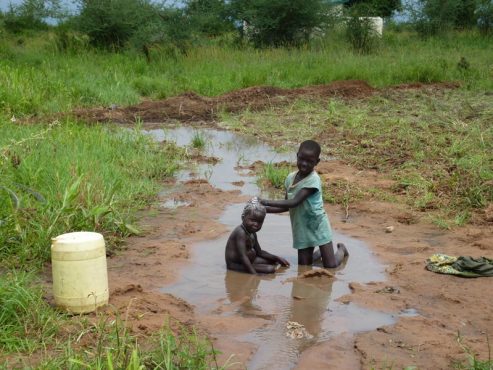

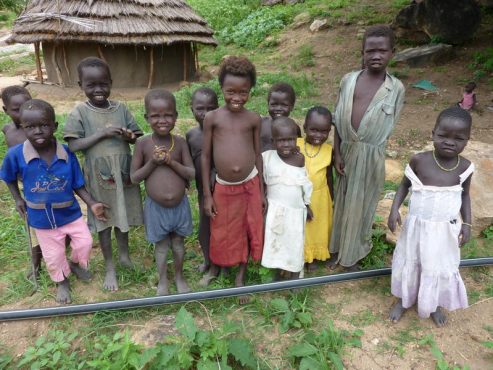
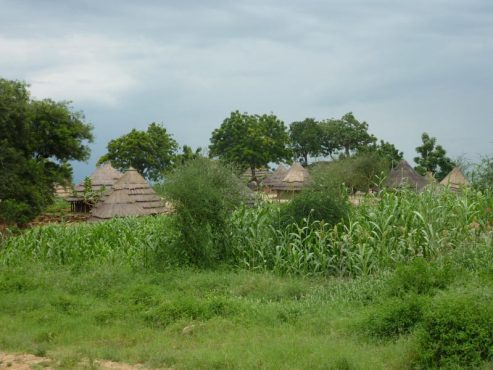
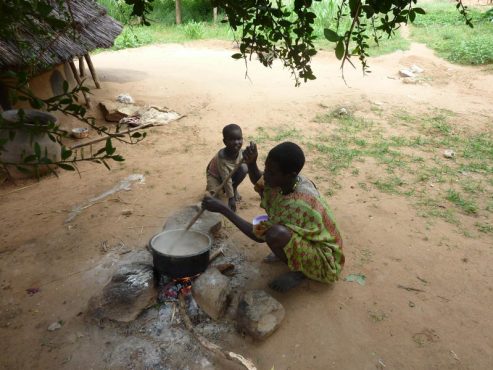
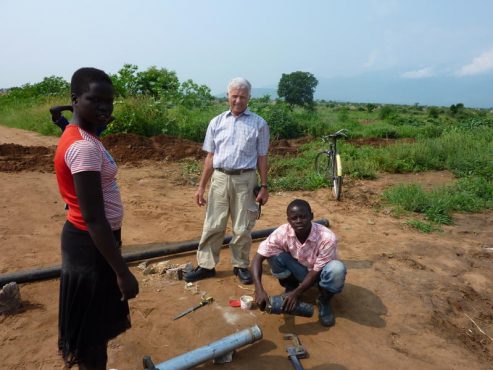
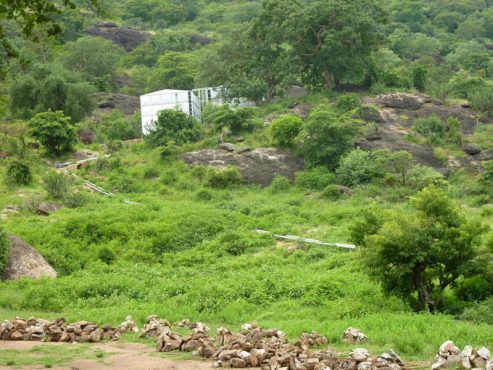
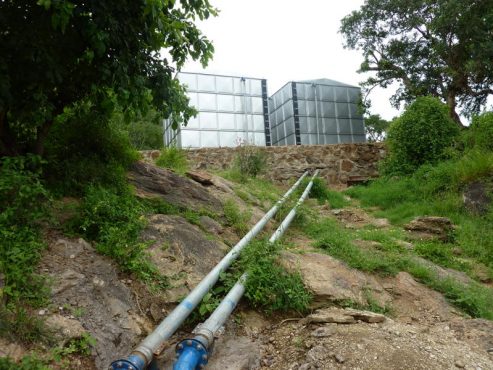
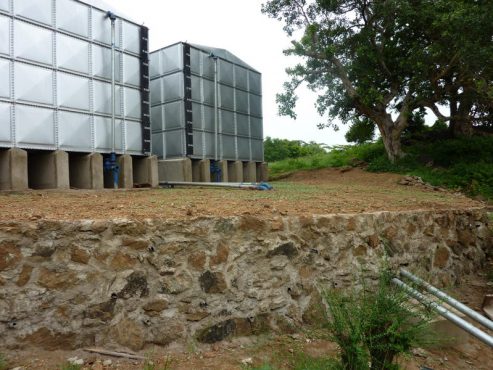
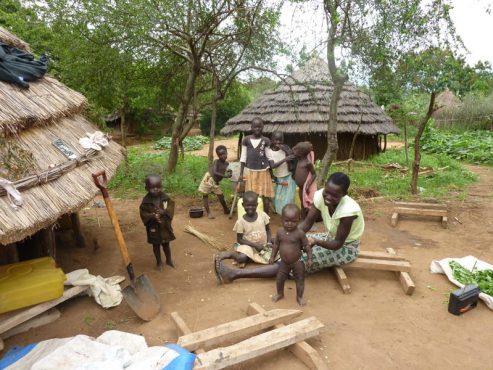

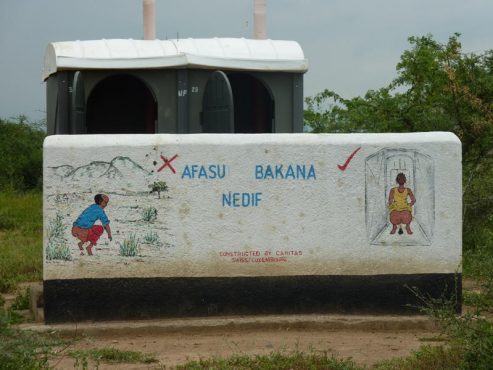
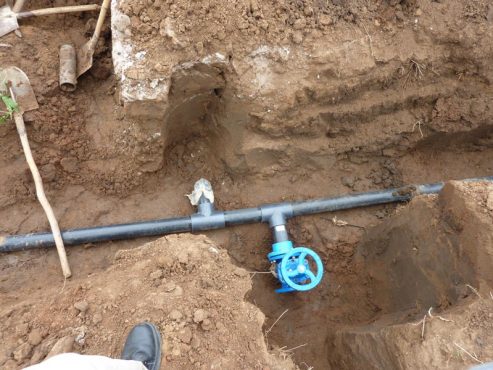

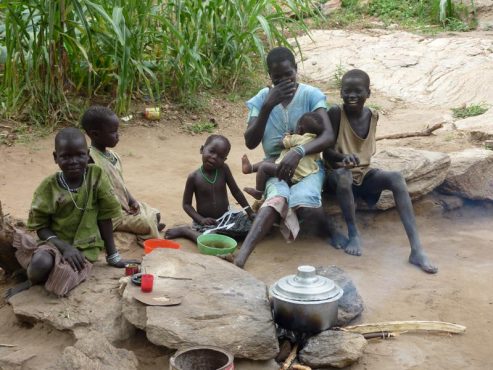
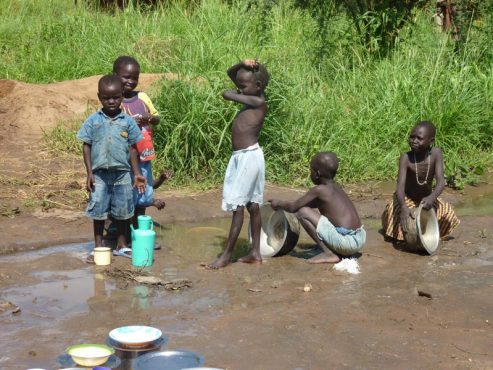
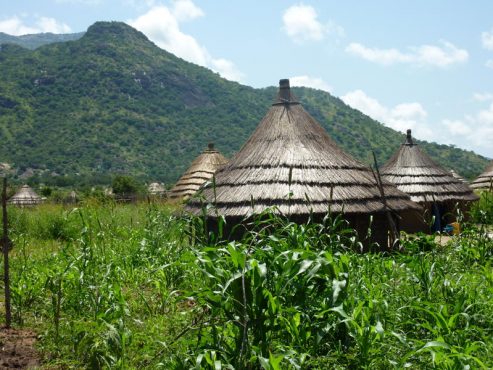

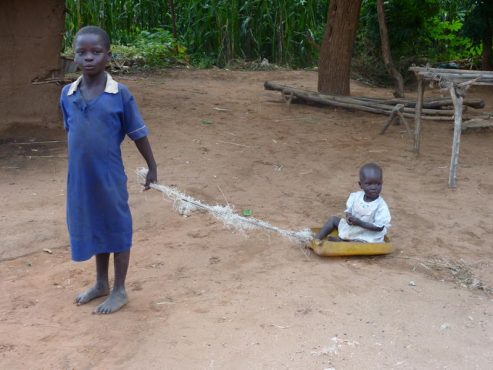
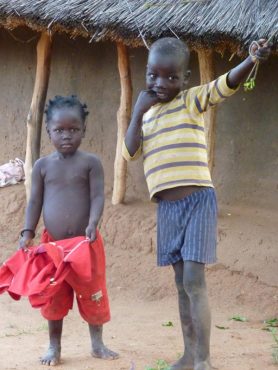

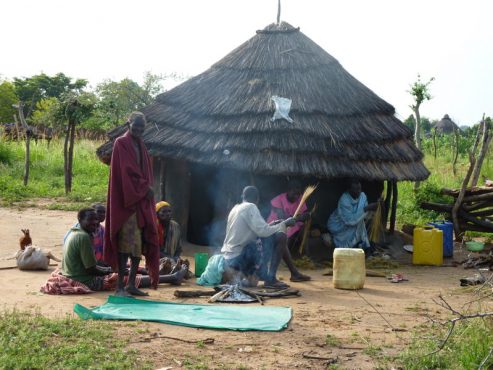



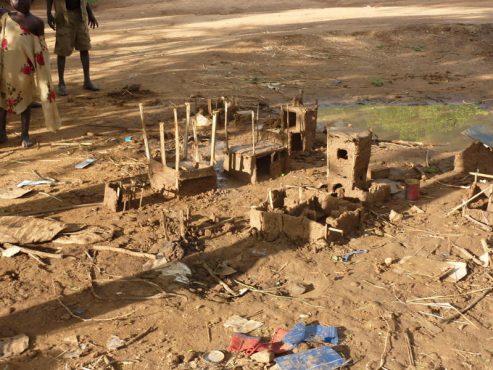
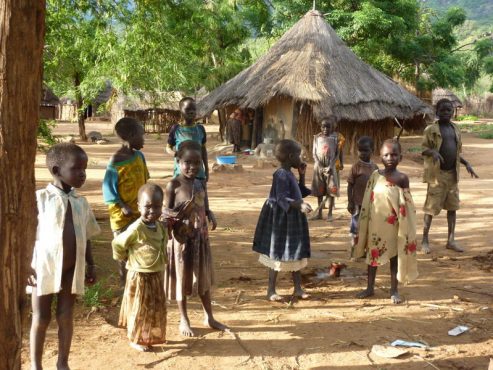

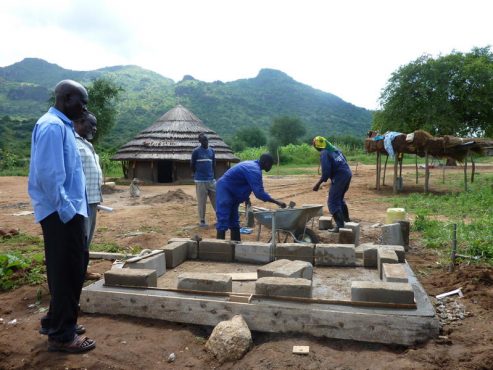
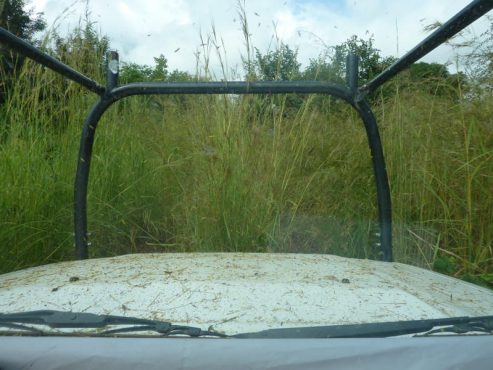
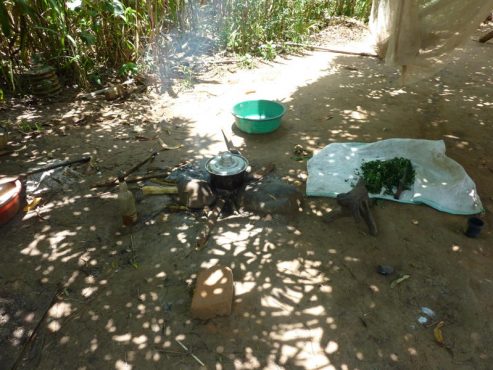
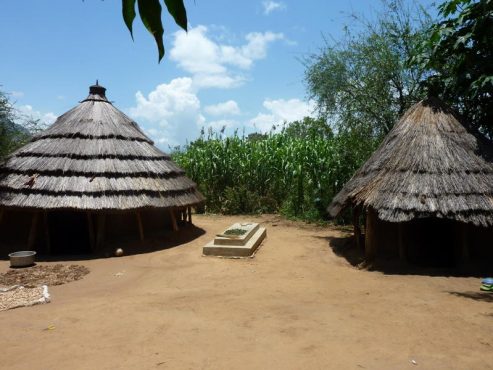
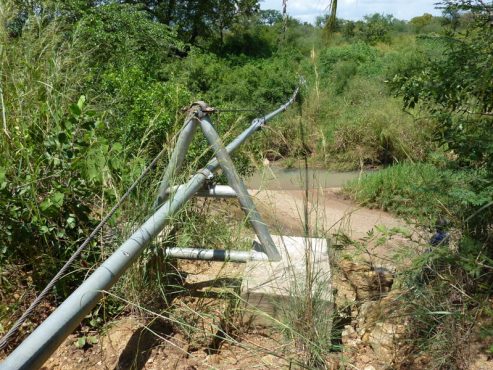
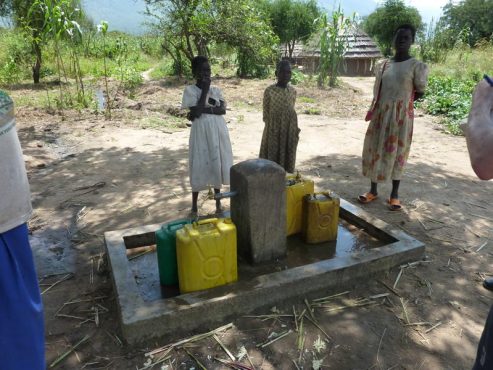
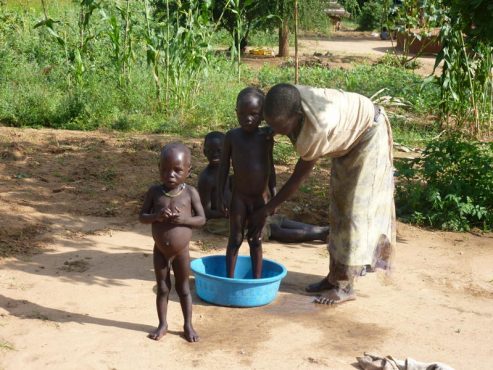
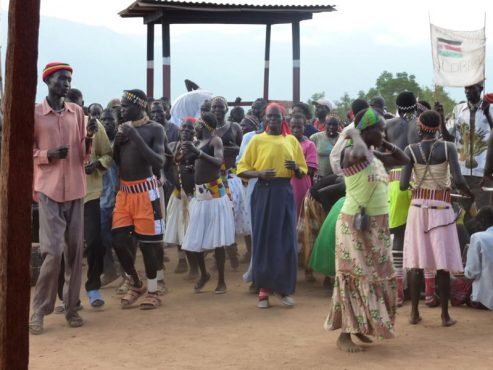

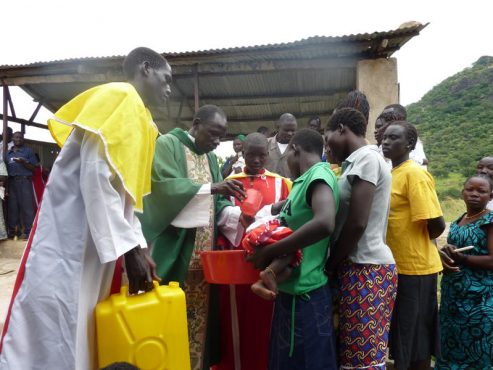
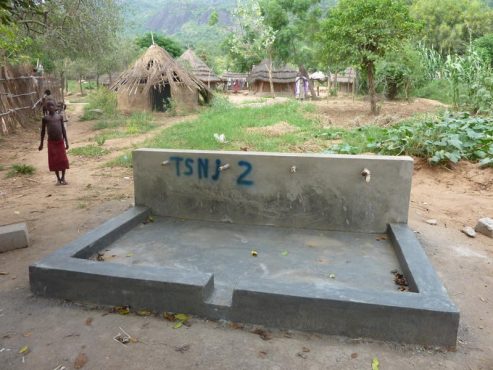
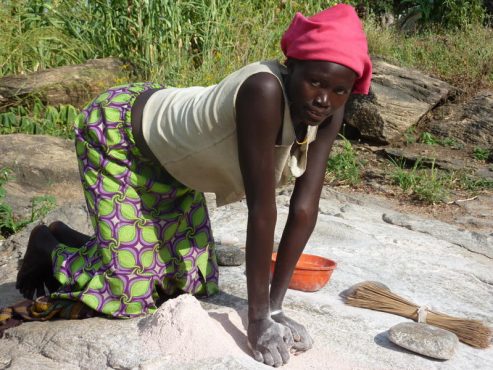

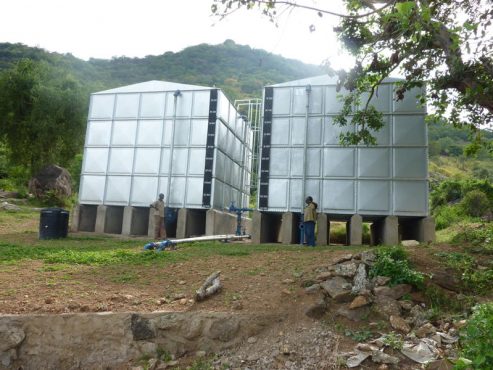
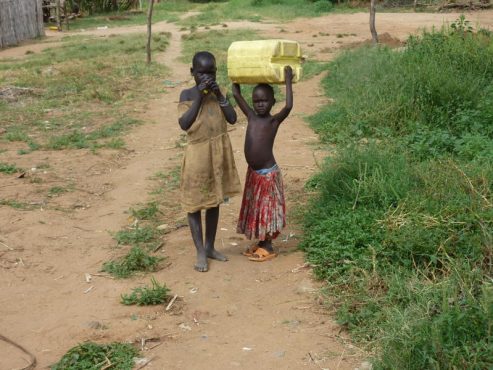
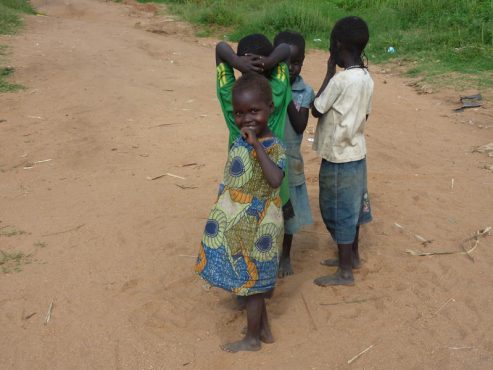
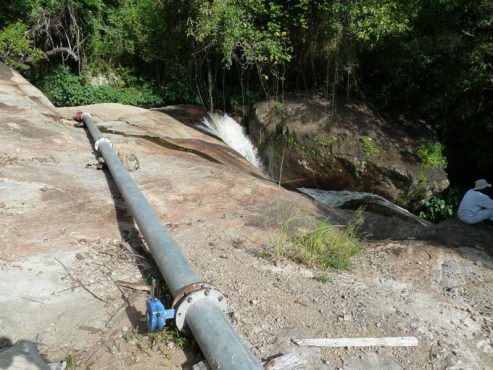
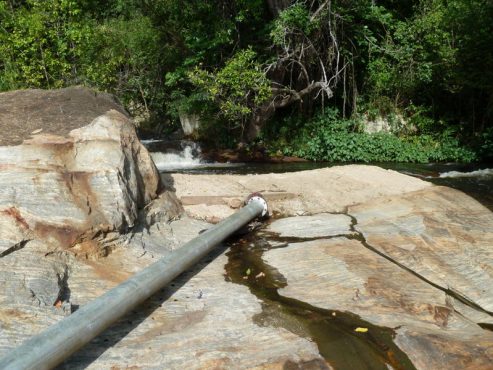
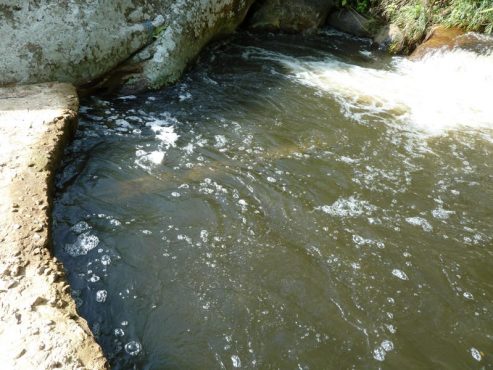
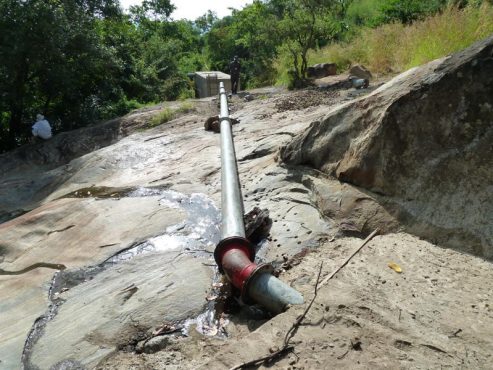
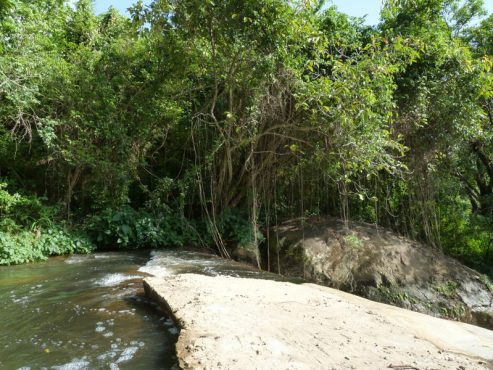

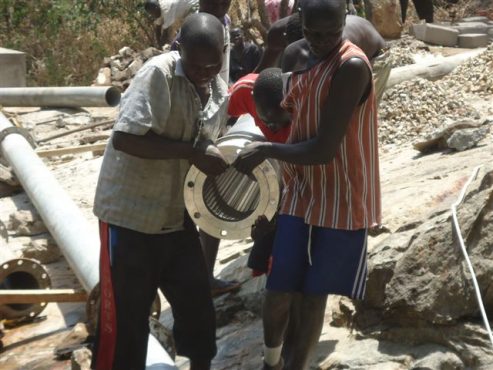
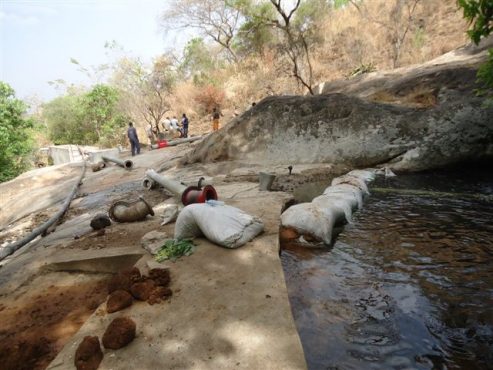
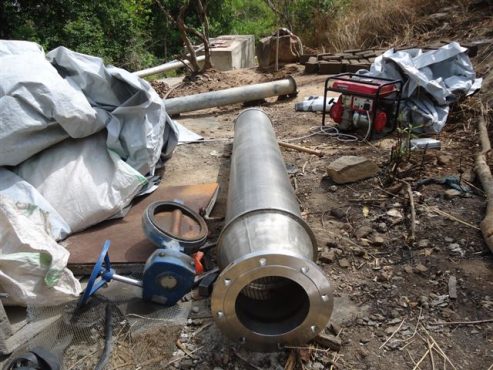
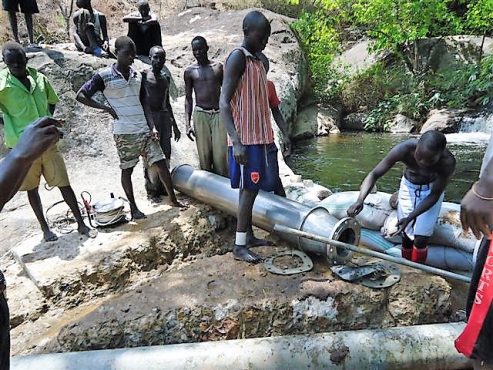
The above pictures show impressions of the water supply of several communities in Ikwotos, South Sudan. The lead had Caritas Switzerland. In total, four villages with around 2,000 households and around 15,000 people benefited from this project.
But it is also a good example of our credo “We connect people”.
In August 2010, we became aware of the project through the following newspaper article (click to read – but only in German available) …
… and got in contact with Mr. Alfred T., Bad Dürkheim, and asked how we could support him from home on his next stay in South Sudan.
First, we agreed that we would act as a back office for technical queries and support the creation of training materials for future maintenance.
Very quickly, however, the defective sampling tube at the central water intake in the mountains became obvious as the central problem – as the excerpt from an e-mail of September 18, 2010 shows:
“Dear Mr. Heimann,
Last Wednesday we went on a mountain tour where the intake pipe is located. At the high temperatures here and constantly through over-tall grass, the tour was a bit exhausting. We wanted to record all points where vents or other fittings are installed. In addition, the amount of water that already supplied the 4 villages, has become very low and we wanted to check what is the cause. The intake pipe is DN 200 St/galv. The line is all around provided with 2-3 mm x 80 mm slots, firmly embedded in the dam and protrudes about 6 m far into the water. Near the edge, a larger hole has broken out between the slots. There is a strong pull of water on this hole and especially now during the rainy season, the water also brings leaves that settle on the hole and blocks it. There is not enough water flowing through the slots. Another big problem is that the inlet pipe can not be disassembled and cleaned. At this point, problems are constantly to be expected, especially when the full amount of water for Ikwotos is needed soon. In my opinion, it would be the best solution to remove the pipe, install a new pipe fixed on both sides with flanges, St / galv., The new inlet pipe should be designed in a T-Shape with small holes (6 mm) on the bottom and laterally in PE. I attach some pictures to you and would like to get to know your opinion.
Many greetings
Alfred T.”
Together with a fellow expert, we designed the new sampling tube as a so-called edge-gap filter. An edge-gap filter is insensitive to contamination due to its widening filter structure in the direction of flow of the water. The filter cleans itself by the water inflowing from the outside. An additional fortunate circumstance was that for the production of the new filter decommissioned items could be used from the infrastructure plant of the fellow expert. The new filter was manufactured by the plant and made available for free as a donation by the company “BASF SE“. The following pictures show the spare tubes and the filter finished until May 2011:
Now it was time to organize the transport chain for the edge-gap filter via Nairobi, Kenya to Ikwoto in South Sudan. We knew that the President of the Rotary Club Eisenberg-Leiningerland has repeatedly got transported medical and further equipment to a clinic that she has set up in Nairobi, Kenya. The transport has been done by the humanitarian aid project „Cargo Human Care e. V.“ of the company Lufthansa Cargo . She was spontaneously willing to support us. After the logistical boundary conditions (By the way: this was already done in the design phase with regard to the expected transport dimensions and the weight …) and the “flight” date was fixed, the filter “only” had to be transported from the workshop of the utility plant in Ludwigshafen to the airport in Frankfurt at Main. That alone is a little interesting episode:
- First, the filter arrived well packed at our private house and was temporarily stored in the driveway.
- A Rotarian club friend provided me a small truck including two trainees (for the loading and unloading of the filter) and together we transported the filter to the doctor´s office of the fellow club president.
- From there she and her father brought it to the airport in Frankfurt.
- Then the flight with Lufthansa Cargo to Kenya followed.
- There it took some time to get the filter out of customs and to the clinic at Nairobi. From the clinic it was then picked up in October 2011 by Caritas Switzerland and transported by truck to Ikwotos in South Sudan.
Finally, in March 2012, the installation of the edge-gap filter at the water supply point in the mountains was started. The following pictures give an impression:
Am 24. Juni 2012 kam dann per Mail die erlösende Nachricht:
“Dear Mr. Heimann
Dear Mr. Tilscher
It is a success story!
My last visit to Ikwotos was very positive. Since the beginning, I have been accompanying the project in Ikwotos as a technical consultant and know the technical and situational conditions well. The edge-gap filter has achieved its goal and helps decisively with feeding the water via the “Intake” to Ikwotos Town. The city has grown, more and more IDP’s come back to their place of origin and settle in Ikwotos.
The edge gap filter has now been definitely installed. Previously, the last work was done at the “Intake”. The overflow wall was raised and extended, the fixing point at the edge of the pool built and the line feed from the filter to the main slide renewed. The edge gap filter is always overflowed with water, which results in an optimization of the feed into the network. The filter can be easily and well maintained by the edge of the pool, which is an essential point.
Despite the change in the original plan to attach the filter in the basin, could not be implemented for structural reasons. However, the chosen solution is very good and simplifies the maintenance as well as the risk of damage by driftwood or boulders and stones that get in heavy rainfall into the basin.
The filter is optimally installed, the benefits are very good.
For further questions I am at your disposal.
Kind regards
Regina W.
Technical Consultant, Caritas Switzerland”
Below are a few pictures on the installation situation: